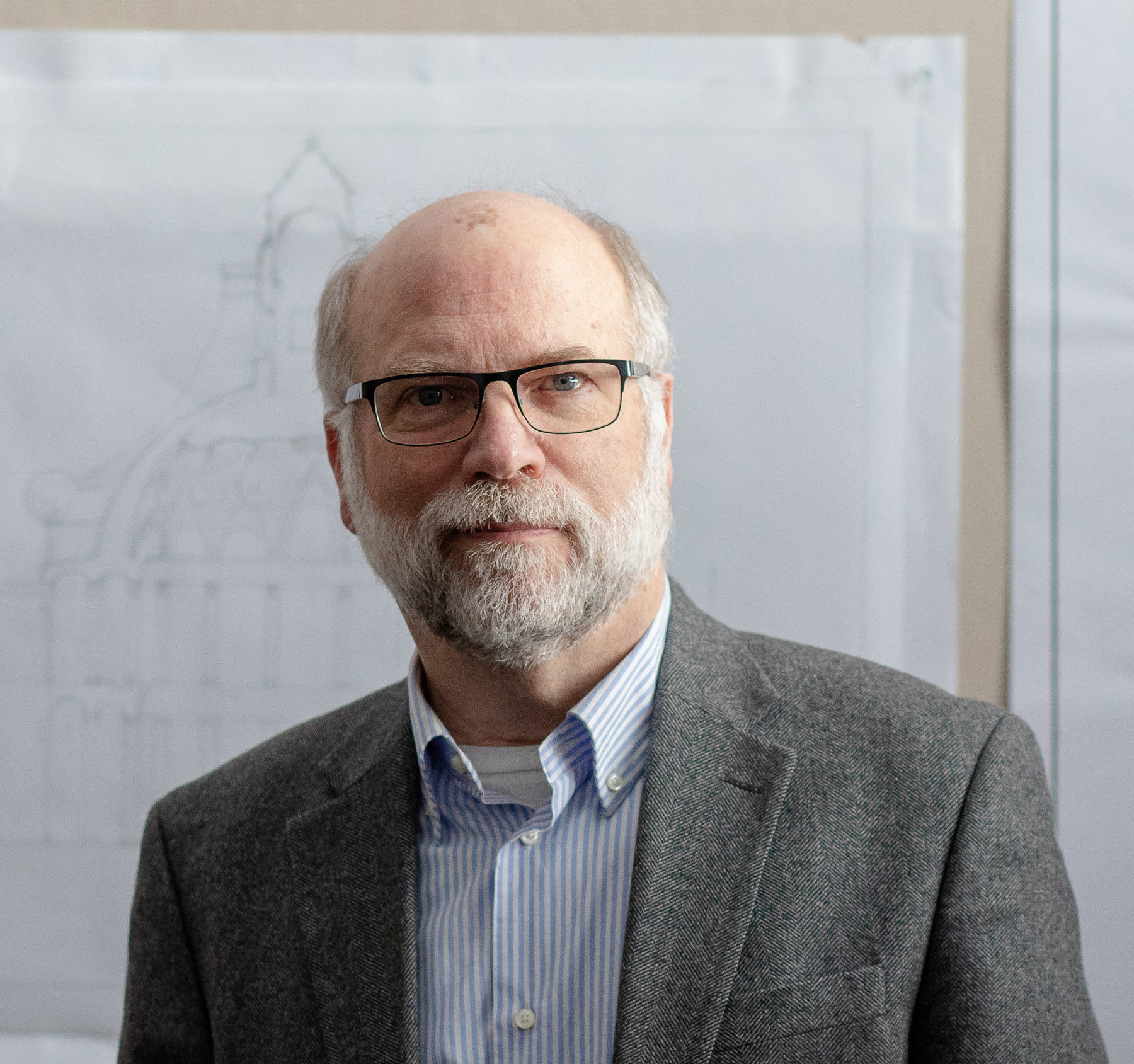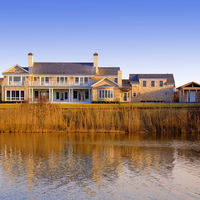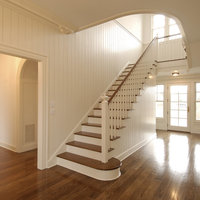
Steven Semes
Director of Michael Christopher Duda Center for Preservation, Resilience, and Sustainability, and Professor, Rome
Prof. Steven W. Semes was a practicing architect for over 30 years before joining the Notre Dame faculty in 2005. Author of two books and numerous articles, Professor Semes is particularly interested in the recovery of the classical language of architecture and the impact that this recovery has on changing approaches to the conservation and interpretation of cultural heritage sites. His current research in this area focuses on the issue of defining appropriate new architecture in historic settings.
Prof. Semes served as Academic Director of the Rome Studies Program from 2008-2011, and continues to divide his time between the Notre Dame campus and the Rome Global Gateway. His research there has focused on the architects of the inter-war period in Rome who continued the classical tradition in architecture and urbanism.
He is the author of The Future of the Past: A Conservation Ethic for Architecture, Urbanism, and Historic Preservation (2009) and The Architecture of the Classical Interior (2004), and was a contributor to the republication of Georges Gromort's The Elements of Classical Architecture, all published by W. W. Norton & Co. in the Classical America Series in Art and Architecture. His articles have appeared in The New Criterion, National Trust Forum Journal, American Arts Quarterly, and Traditional Building, among other publications.
Professor Semes received a Bachelor of Science in Architecture from the University of Virginia (1975), and a Master of Architecture from Columbia University (1980).
Educational Background
Columbia University, New York, NY, M.Arch., 1978-80.
University of Virginia, Charlottesville, VA, B.S. in Arch., 1971-75.
Registration Data
Architectural License: New York
Recent Honors and Awards
Member, Awards Jury, The Richard H. Driehaus Preservation Awards, National Trust for Historic Preservation, July 2016.
Member, Advisory Board, OPUS, academic journal of the Università degli Studi “G. D’Annunzio,” Pescara-Chieti, Italy, since 2013.
Visiting Research Fellow, The Prince’s Foundation for Building Community, London, U.K., November-December 2011.
The Clem Labine Award, given by Restore Media and Traditional Building Magazine, Chicago, Il., October 21, 2010.
Member, Editorial Advisory Board, Change Over Time, journal of the graduate program in historic preservation of the University of Pennsylvania, since February 2010.
Faculty Fellow, Nanovic Institute for European Studies, University of Notre Dame, since September 2007.
Fellow, Institute of Classical Architecture & Classical America, New York, N.Y., 1993 to 2007 (Fellow Emeritus since 2007).
Recent Research, Scholarship, and Creative Activity
Editor, The Classicist, Institute of Classical Architecture & Art, Number 11 (2014) and Number 12 (2015).
“Gustavo Giovannoni e la citta-giardino: Da Letchworth a Garbatella,” an invited paper in Italian for the conference “Gustavo Giovannoni e l’architetto integrale,” Accademia Nazionale di San Luca, Rome, October 25-27, 2015.
“The Architecture of Place,” an interview podcast for The New Criterion journal, October 2015 (available at https://www.youtube.com/watch?v=T9YTLu2ztzM&feature=share ).
“The View from Rome,” blog for Traditional Building magazine, January 2010 – July 2015.
Professional practice, Steven W. Semes, Architect, New York, NY, 1999-2006.
Recent Publications
“Guidelines of the National Park Service for Historic Preservation,” Traditional Building, August, 2016, p. 12.
“Save Paris!” in Paris without Skyscrapers: The Battle to Save the Skyline of the World’s Most Beautiful City,” Americans for the Preservation of Paris, 2015, p. 77.
“Preserving the City of Tomorrow,” The New Criterion, December 2015, pp. 14-18.
“The City of Continuity vs. the City of Contrast: Historic Preservation, New Traditional Architecture, and Sustainability,” in Economakis, Richard, ed., Durability in Construction: Tradition and Sustainability in Twenty-first Century Architecture, Papadakis, 2015, pp. 200-209.
“What’s an Architrave? Announcing the New Graduate Program in Historic Preservation,” Traditional Building, October 2014, pp. 12-13.
“Forum: The Origins of Modern Conservation Theory in Italian Fascism,” Traditional Building, August 2013, p. 79.
"Another Rome: The Architecture and Urbanism of Amando Brasini," The Classicist, Volume 10, June 2013, pp. 40-57.
“New Buildings in Historic Settings: Recent Conservation Experience in England,” National Trust Forum Journal, Fall 2013, vol. 28, no. 1, pp. 13-22.
“Adaptation as a Model for New Architecture in Historic Settings: Some Observations from Rome,” Change Over Time, University of Pennsylvania, vol. 2.2, Fall 2012, pp. 88-105.
The Future of the Past: A Conservation Ethic for Architecture, Urbanism, and Historic Preservation, (New York: W.W. Norton & Co., 2009), 272 pp.
“New Buildings Among Old: Historicism and the Search for an Architecture of Our Time,” American Arts Quarterly, Spring 2008.
“Differentiated and Compatible: Four Strategies for Additions in Historic Settings,” National Trust for Historic Preservation Forum Journal, Summer 2007.
“Chorus Angelorum: The Place of Musicians in the Church Interior,” Sacred Architecture, Fall 2006, pp. 12-15.
“Le Violon d’Ingres: Some Reflections on Architecture and Music,” American Arts Quarterly, Spring 2006, pp. 24-32.
The Architecture of the Classical Interior, (New York: W.W. Norton & Co., 2004), 192 pp.
Elements of Classical Architecture (contributor), (New York: W.W. Norton & Co., 2001).
Current Academic, Professional, Public Service and Professional Memberships
Society of Architectural Historians
Congress for the New Urbanism
National Trust for Historic Preservation
Institute of Classical Architecture & Art
Recently Taught Courses
ARCH 53231 History and Theory of Historic Preservation
ARCH 41121 Design IV
ARCH 7111 Elements and Principles of Classical Architecture
ARCH 74322 Graduate Seminar: Italian Urbanism
ARCH 84421 International Conservation Laboratory


